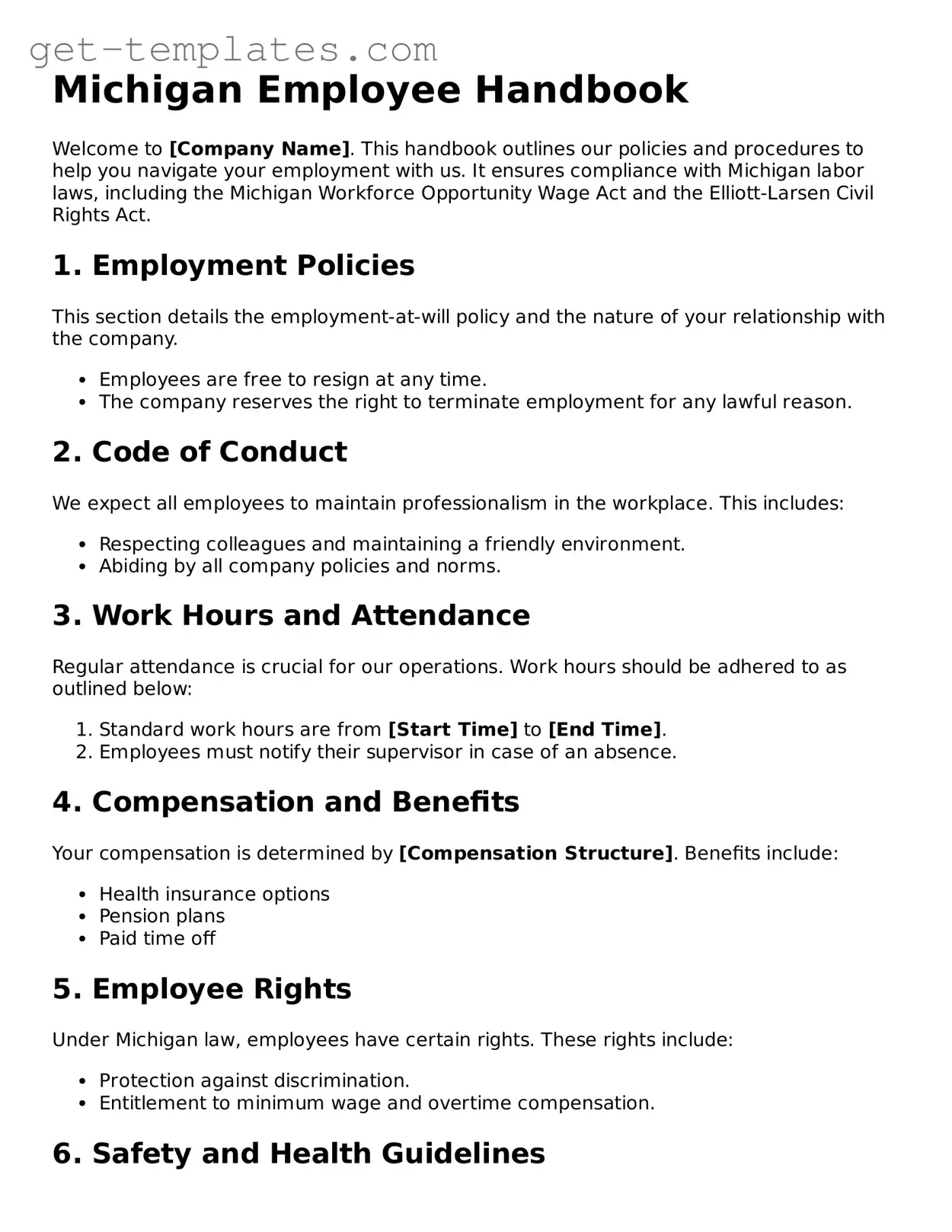Michigan Employee Handbook
Welcome to [Company Name]. This handbook outlines our policies and procedures to help you navigate your employment with us. It ensures compliance with Michigan labor laws, including the Michigan Workforce Opportunity Wage Act and the Elliott-Larsen Civil Rights Act.
1. Employment Policies
This section details the employment-at-will policy and the nature of your relationship with the company.
- Employees are free to resign at any time.
- The company reserves the right to terminate employment for any lawful reason.
2. Code of Conduct
We expect all employees to maintain professionalism in the workplace. This includes:
- Respecting colleagues and maintaining a friendly environment.
- Abiding by all company policies and norms.
3. Work Hours and Attendance
Regular attendance is crucial for our operations. Work hours should be adhered to as outlined below:
- Standard work hours are from [Start Time] to [End Time].
- Employees must notify their supervisor in case of an absence.
4. Compensation and Benefits
Your compensation is determined by [Compensation Structure]. Benefits include:
- Health insurance options
- Pension plans
- Paid time off
5. Employee Rights
Under Michigan law, employees have certain rights. These rights include:
- Protection against discrimination.
- Entitlement to minimum wage and overtime compensation.
6. Safety and Health Guidelines
We prioritize your safety. Please adhere to all safety protocols and report any hazards immediately.
7. Grievance Procedure
If you have a concern, please follow this process:
- Speak to your immediate supervisor.
- If unresolved, escalate to [HR Contact Name].
8. Acknowledgment of Receipt
Please sign below to acknowledge receipt of this handbook:
Employee Name: __________________________
Date: __________________________
Conclusion
Thank you for being part of [Company Name]. We value your contributions and look forward to a successful partnership.
